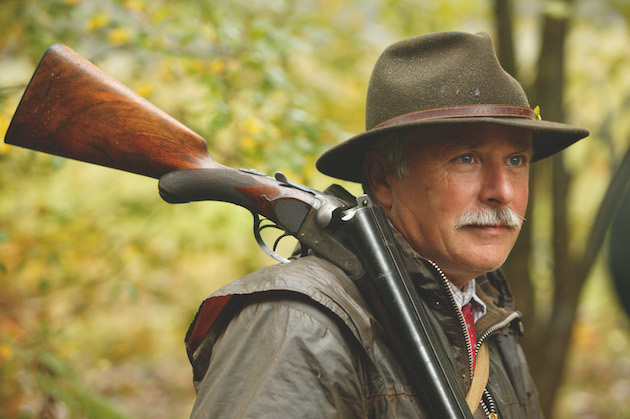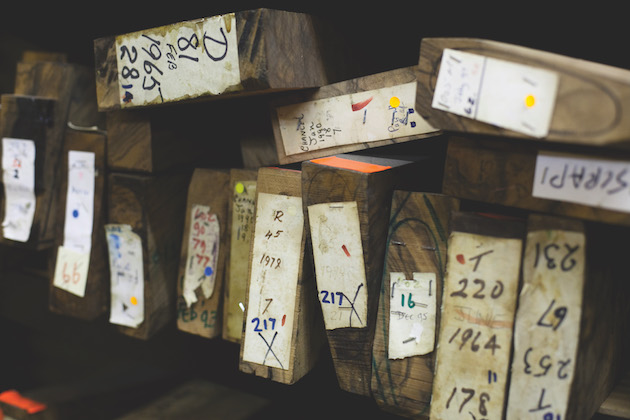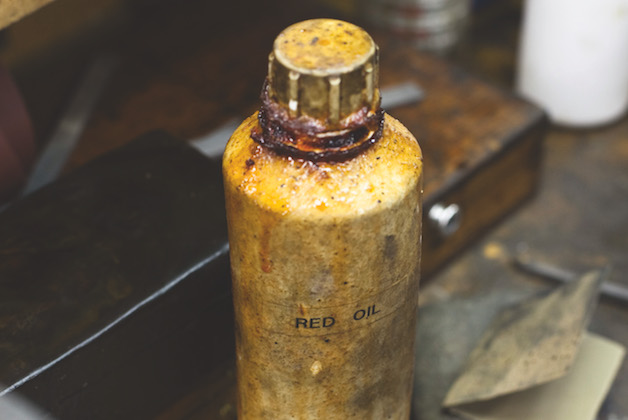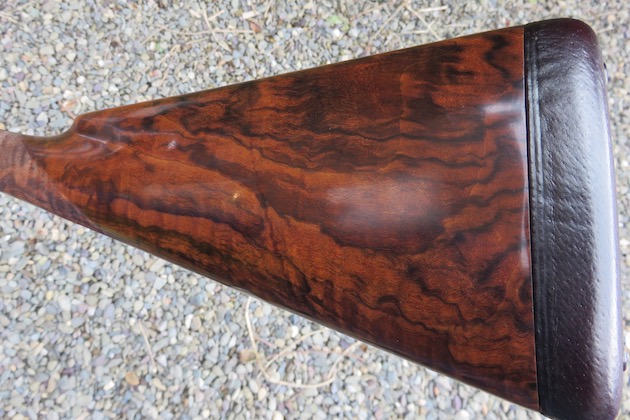Is a wooden or synthetic rifle stock best? And what about laminates?
I am undecided as to whether to go for a wood stock or one made from a synthetic material. What…
 Farnell Farm Shoot kent
Usd 24 july 19 wood grade
Farnell Farm Shoot kent
Usd 24 july 19 wood grade
When deciding to re-stock a gun with a new piece of walnut, a lot of thought needs to be applied before gun stock (known in the gun trade as a blank) is chosen and any wood gets cut.
As with many aspects of gunmaking and repair, a little knowledge can be a dangerous thing. So can bargain-hunting and cost- shaving; especially if you are an enthusiastic amateur.

Gun stocks waiting for use at Purdey’s London factory
Bespoke gunmakers generally ignore this grading and go through piles of blanks to find individual ones that meet their demands. It’s not simply a matter of choosing the ‘busiest’ pieces of wood.
Every manufacturer seems to use a different system. The most common grading system is numerical but others are descriptive, such as ‘fancy’ or ‘semi-fancy’. Others use A, AA, AAA and so on. In reality, it is pretty meaningless and it’s best to look at lots of options and choose the blank you like.

This smart stock blank was carefully chosen for re-stocking a classic Holland & Holland shotgun
However, don’t buy the blank without your stocker’s approval as you don’t know what you are doing and he does. I hate to accept a re-stocking commission and have to tell the client that the lump of wood he has bought specially for the project is a non-starter.
In the Victorian and Edwardian eras, the best walnut for gun stocks traditionally came from the south of France. The variety best suited is Juglans regia.
However, two World Wars and 300 years of demand have exhausted supplies and today most wood used in the British gun trade comes from Turkey. There are supplies from Bulgaria and Iran, as well as the US and New Zealand, but Turkey is the main supplier.
To be hard enough and well figured enough for use in quality gun stock making, a tree has to be roughly 200 to 300 years old and ideally grown in tough, arid conditions, where the slow growth provides the desired colour, figure and density. Good walnut ‘wears like iron but cuts like butter’ is the gunmaker’s adage.
The colour and figure of the walnut will vary.
Blanks, either quarter-sawn or flat-sawn, depending on the way you want figure to show, are best if air-dried. The blank is cut from the root collar of the tree, where trunk and roots meet.
London gunmakers used to store large quantities of walnut blanks, drying them slowly for at least seven years until the moisture content was stable. Some suppliers kiln-dry or steam their wood to sell it more quickly but this can make it brittle and should be avoided.

Red oil, seen here at the Purdey factory, is used to colour classic English guns
The colour depends partly on the finish applied. Traditionally, British gunmakers apply ‘red oil’ to their stocks. This is linseed oil in which alkanet root has been steeped for months. It produces a blood-red liquid that soaks into the open grain and enhances the contrasting figure and imparting a warm, reddish base.
One give-away sign that an English gun has been re-stocked abroad is the absence of the ‘right’ colour because they have omitted the red-oil stage.
Good wood choice is not entirely subjective — there is the practical consideration of strength. The gun stock is at its weakest in the hand, which flexes, and around the head, where the metalwork is let in. Here, the wood needs to be straight grained.

Straight grain shown in a bespoke gun where the inletting and hand require strength and stability.
Once the straight-grained wood has flowed from the hand to the comb, it can become more figured and here we will ideally see the development of dark lines and other figuring, which should continue all over the wider butt stock and flow into the toe.
When re-stocking British guns I prefer a classic style with straight grain in the hand, moving into black-streaked figure, with patterns running downwards and flowing into the toe. This accentuates the flow of the gun’s lines and does not distract the eye purely to the figure in the wood.
If the gun has a stock bolt holding it tight on to the action, it is possible to have more highly figured wood throughout length of the blank. We see this on high-grade Italian over-and-unders with so-called ‘marble cake’ figure.

This re-stocked 1897 W&C Scott is an example of good colour, figure and finish
Ultimately, once you have made sure the wood is properly cured, is optimally configured for strength and of a price you can live with, the rest is up to you. We all have different ideas of what is beautiful.
However, pale marble-cake stocks on vintage English guns look wrong, as do those made from American claro walnut and finished without red oil.
Some people show me their pride and joy and, to my eye, they have ruined the gun. But it is their gun, so what does it matter?
Finally, we come down to the issue of cost. Walnut stock blanks can be bought for as little as £100 or as much as £2,000, even more for some spectacular pieces. In general, you should be able to get a very nicely figured and coloured blank for between £600 and £1,200.
I am undecided as to whether to go for a wood stock or one made from a synthetic material. What…
Eighty miles due north of Antalya is the small city of Burdur. Best known for its vast, ancient fishless lake, Burdur…
As with all aspects of gunmaking, a large part of the pleasure of the stocking process for the customer is comparing his aspirations, tastes and desires with the advice and expertise of his gunmaker to create an outcome that will be both aesthetically pleasing, practical and objectively tasteful.
KAHLES introduces the revolutionary K5-40x56i—a new era in long-range shooting optics. With a 40% wider field of view, an exceptionally comfortable eyebox, and precision performance even at 40X magn...
A trail cam is an invaluable tool for learning what’s on your patch and, even more importantly, what it’s doing, as Will Pocklington discovers